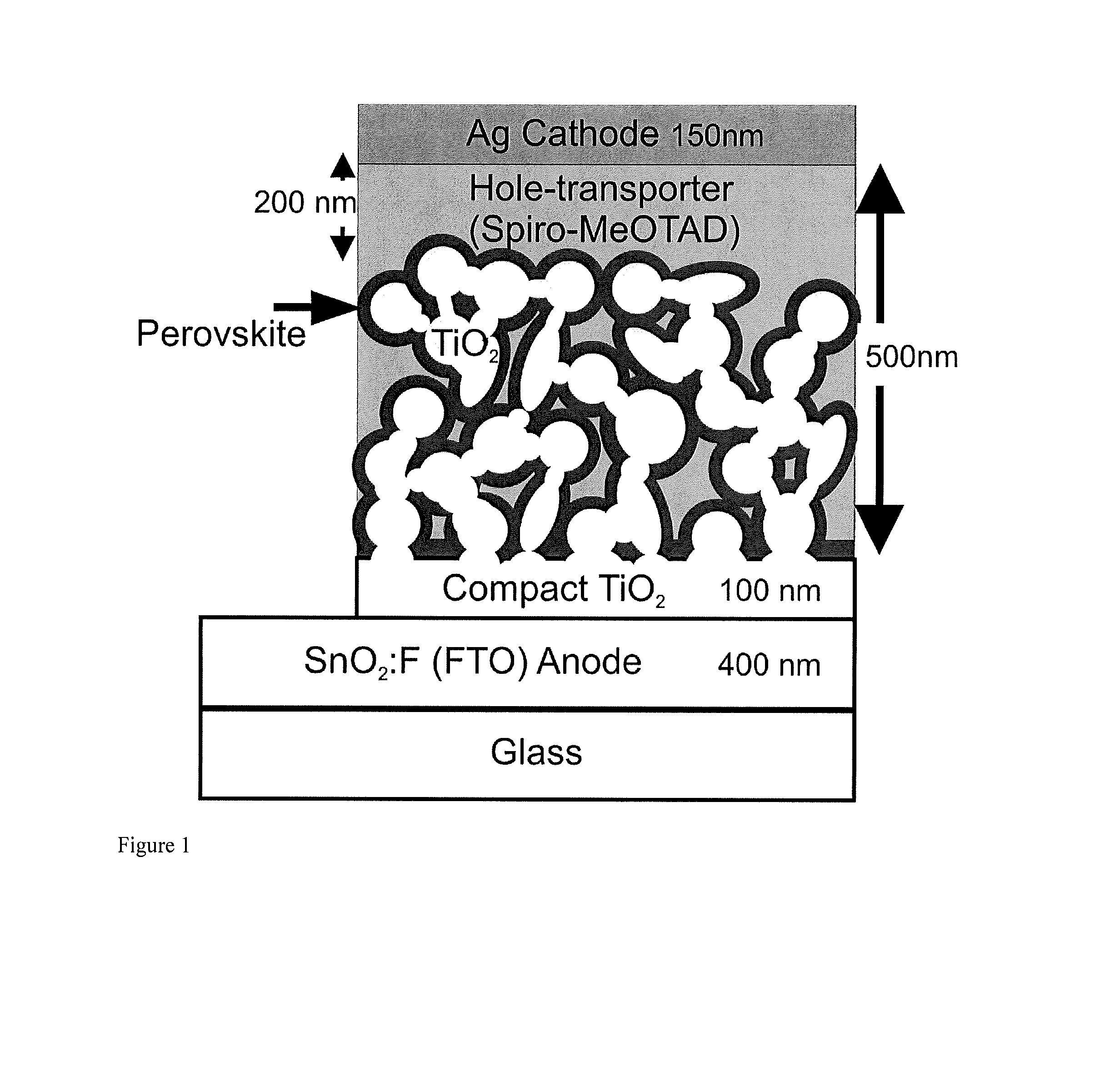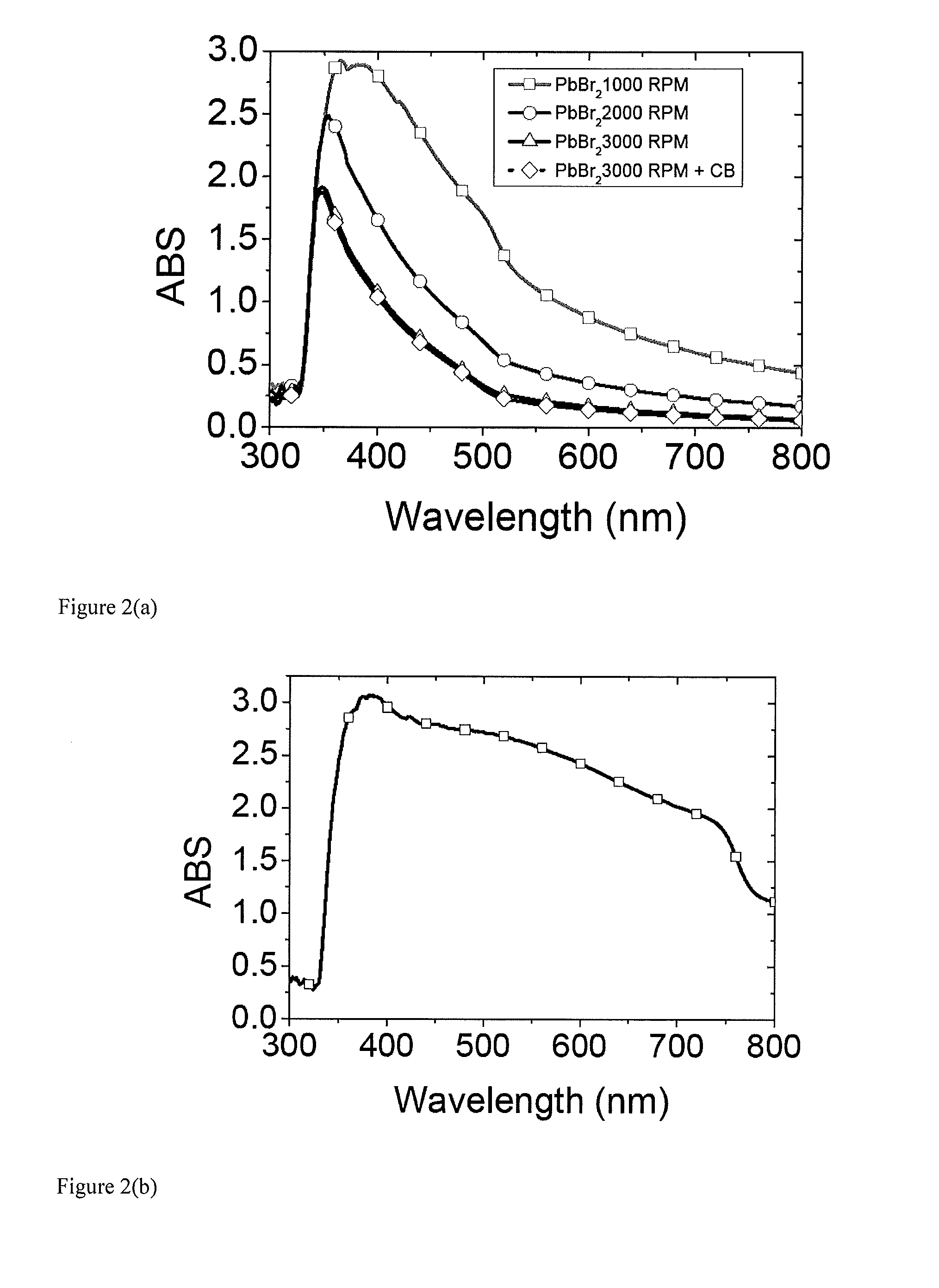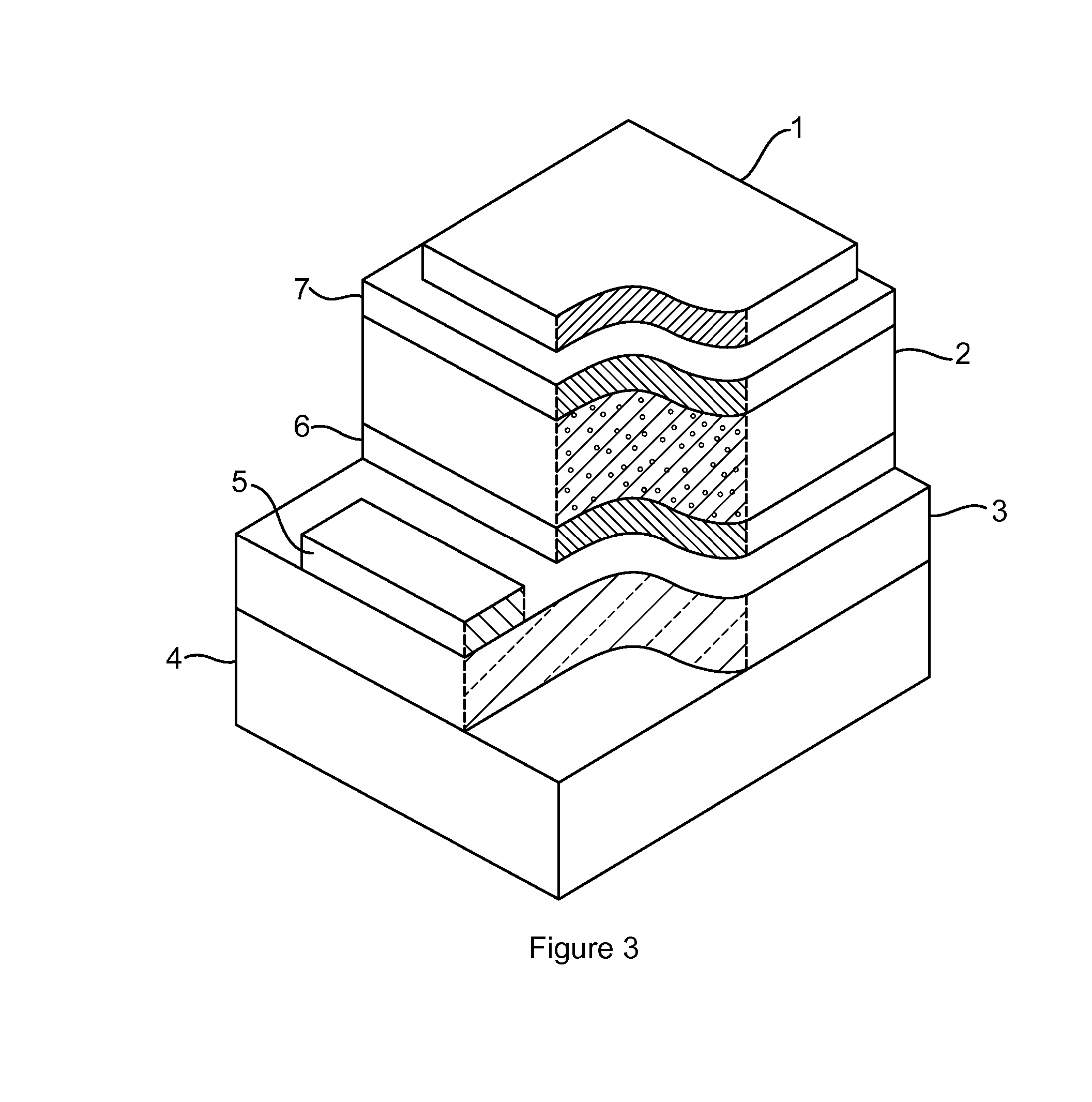Optoelectronic devices with organometal perovskites with mixed anions
a technology of organometal perovskites and optoelectronic devices, which is applied in the direction of sustainable manufacturing/processing, final product manufacturing, conductors, etc., can solve the problems of affecting the use of solar energy manufacturing devices, affecting the power conversion efficiency of solar energy, and achieving further significant increases in power conversion efficiency. , the effect of high power conversion efficiency and photocurren
- Summary
- Abstract
- Description
- Claims
- Application Information
AI Technical Summary
Benefits of technology
Problems solved by technology
Method used
Image
Examples
examples
Experimental Description
1. Synthesis of Organometal Halide Perovskites:
1.1. Preparation of Methylammonium Iodide Precursor
[0438]Methylamine (CH3NH2) solution 33 wt. % in absolute ethanol (Sigma-Aldrich) was reacted with hydriodic acid 57 wt. % in water (Sigma-Aldrich) at 1:1 molar ratio under nitrogen atmosphere in anhydrous ethanol 200 proof (Sigma-Aldrich). Typical quantities were 24 ml methylamine, 10 ml hydroiodic acid and 100 ml ethanol. Crystallisation of methylammonium iodide (CHNH3I) was achieved using a rotary evaporator a white coloured precipitate was formed indicating successful crystallisation.
[0439]The methylamine can be substituted for other amines, such as ethylamine, n-butylamine, tert-butylamine, octylamine etc. in order to alter the subsequent perovskite properties. In addition, the hydriodic acid can be substituted with other acids to form different perovskites, such as hydrochloric acid.
1.2. Preparation of Methylammonium Iodide Lead (II) Chloride (CH3NH3PbCl2I) ...
PUM
| Property | Measurement | Unit |
|---|---|---|
| thickness | aaaaa | aaaaa |
| thickness | aaaaa | aaaaa |
| organic | aaaaa | aaaaa |
Abstract
Description
Claims
Application Information
 Login to View More
Login to View More - R&D
- Intellectual Property
- Life Sciences
- Materials
- Tech Scout
- Unparalleled Data Quality
- Higher Quality Content
- 60% Fewer Hallucinations
Browse by: Latest US Patents, China's latest patents, Technical Efficacy Thesaurus, Application Domain, Technology Topic, Popular Technical Reports.
© 2025 PatSnap. All rights reserved.Legal|Privacy policy|Modern Slavery Act Transparency Statement|Sitemap|About US| Contact US: help@patsnap.com



